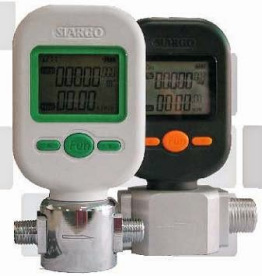Thermal mass flowmeters are most commonly used to measure the mass flow of clean gases, such as air, nitrogen, hydrogen, helium, ammonia, argon, and other industrial gases. Mixtures, such as flue stack flow and biogas flow,
can be measured when their composition is known.
An advantage of this technology is its dependence upon thermal properties that are almost independent of gas density. Be careful when using thermal flow meters to measure the flow of gases with unknown and/or varying composition, such as hydrogen-bearing off-gases and other mixtures that can disproportionately affect the thermal flow meter measurement.

Thermal mass flow meters are used almost entirely for gas flow applications. As the name implies, thermal mass flow meters use heat to measure flow. Thermal mass flow meters introduce heat into the flow stream and measure how much heat dissipates using one or more temperature sensors. The amount of heat lost from the sensor is dependent upon the sensor design and the thermal properties of the fluid. The thermal properties of the fluid can (and do) vary with pressure and temperature, however these
variations are typically small in most applications. In these applications where the thermal properties of the fluid are known and relatively constant during actual operation, thermal flow meters can be used to measure the mass flow of the fluid because the thermal flow measurement is not dependent upon the pressure or temperature of the fluid.
